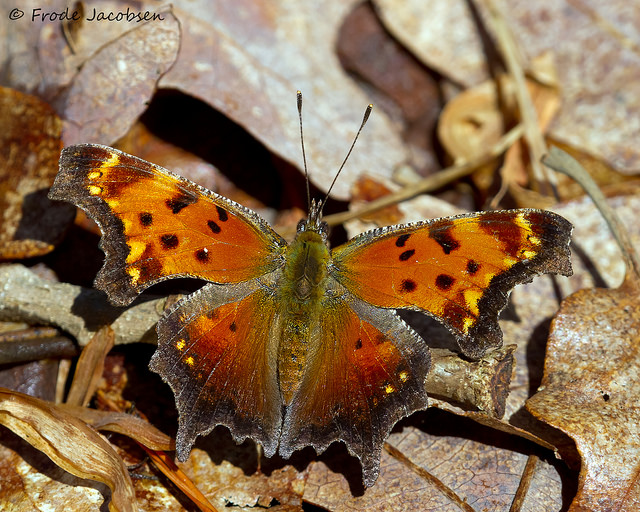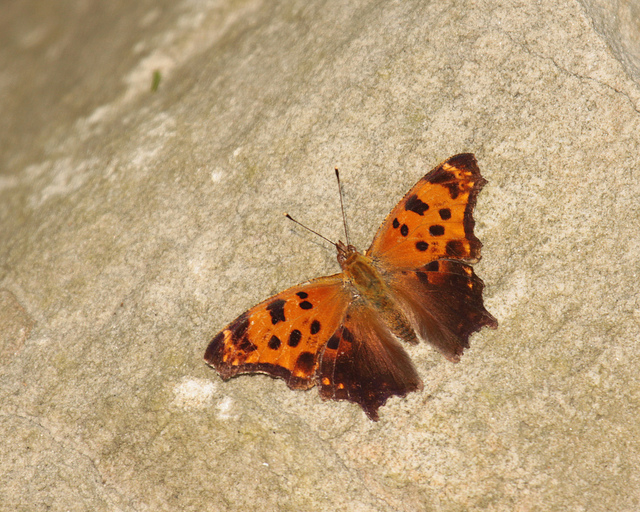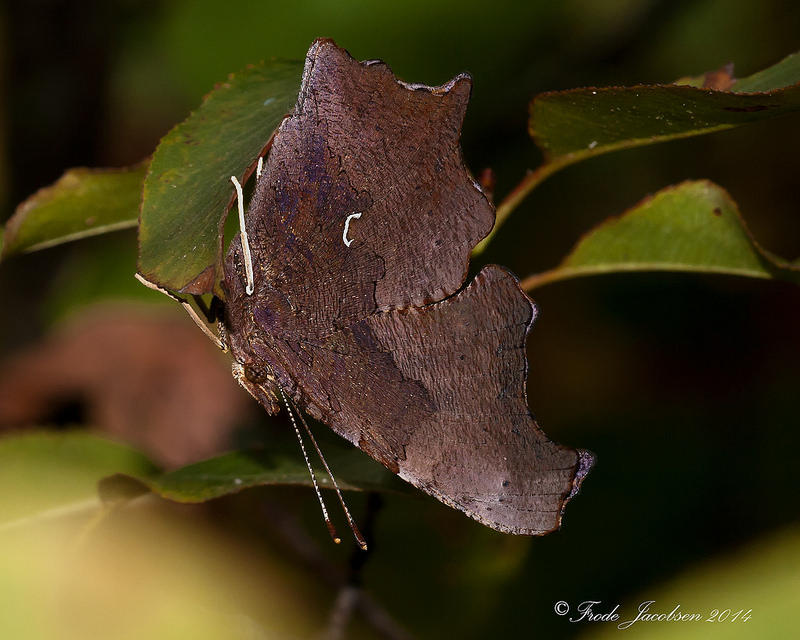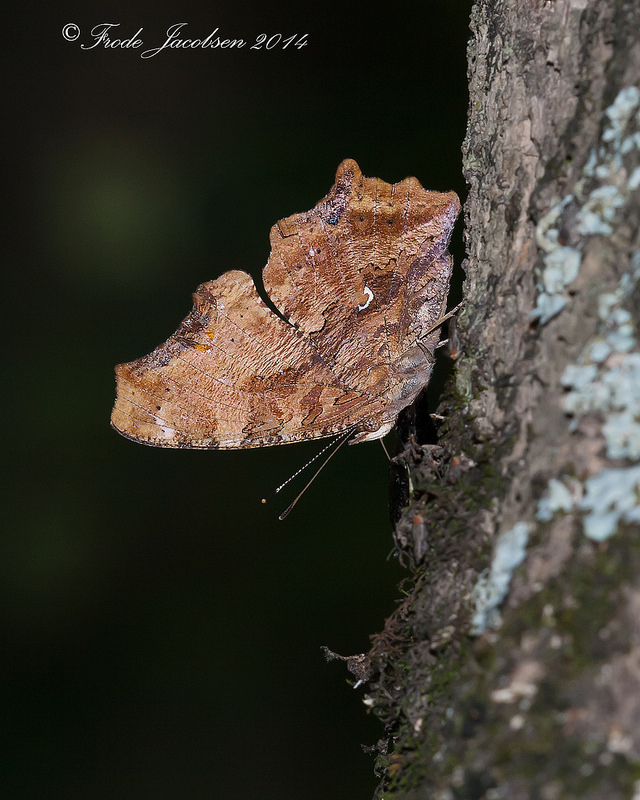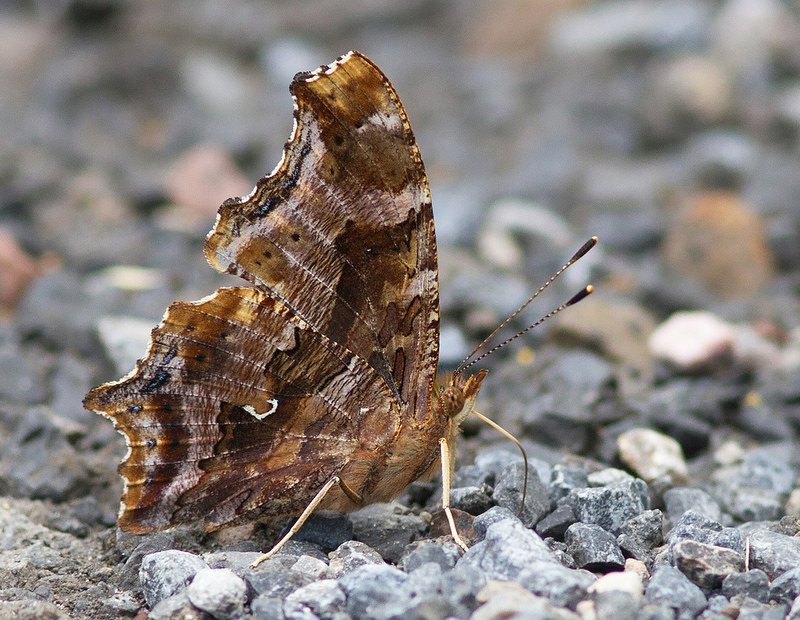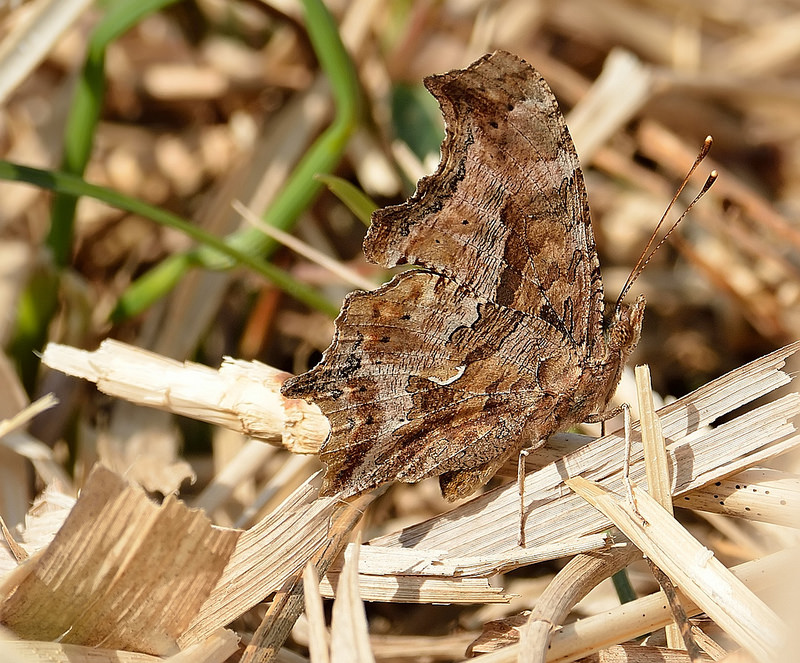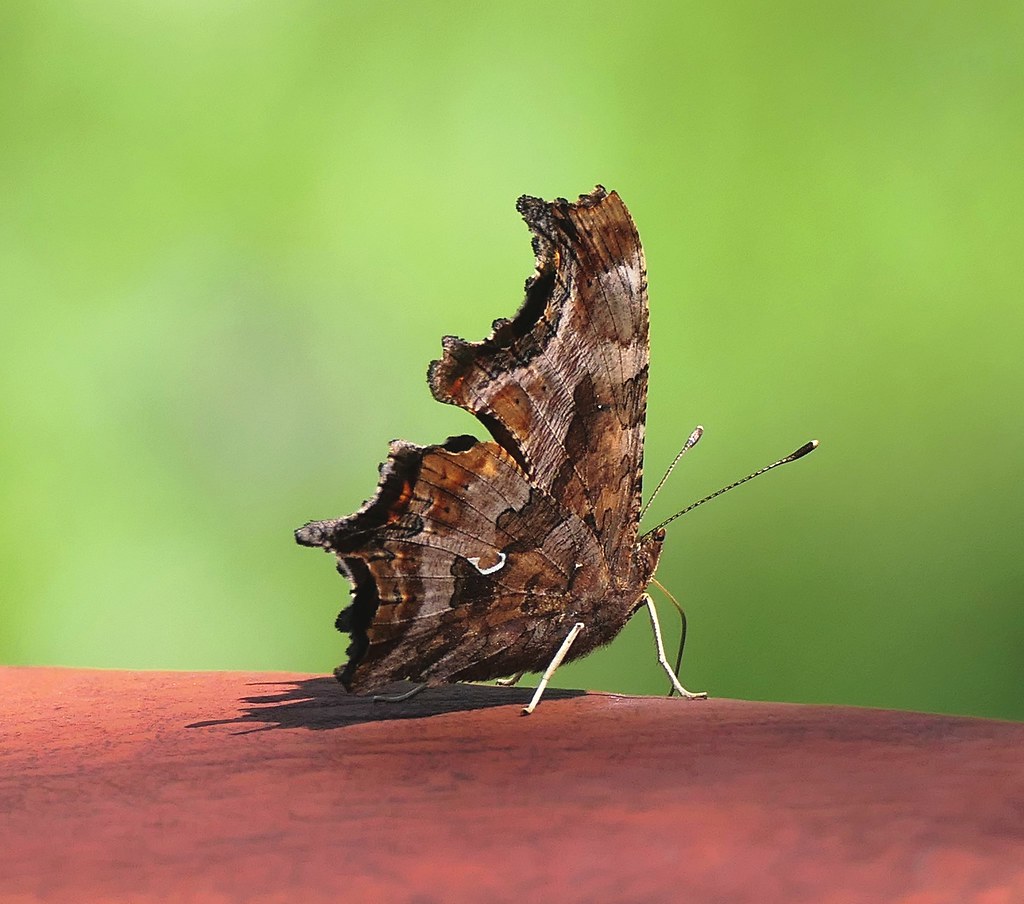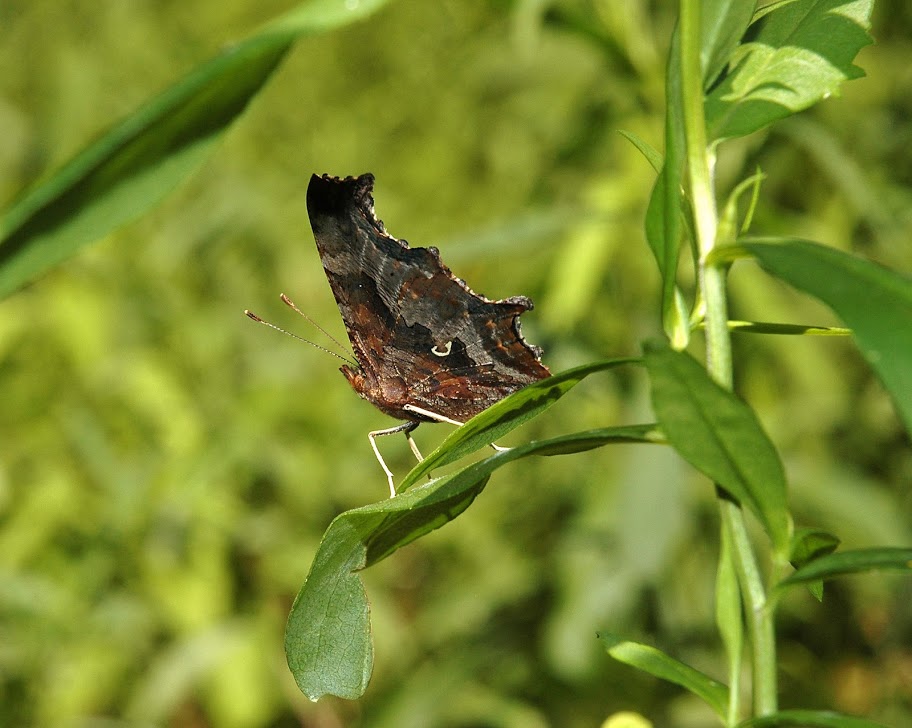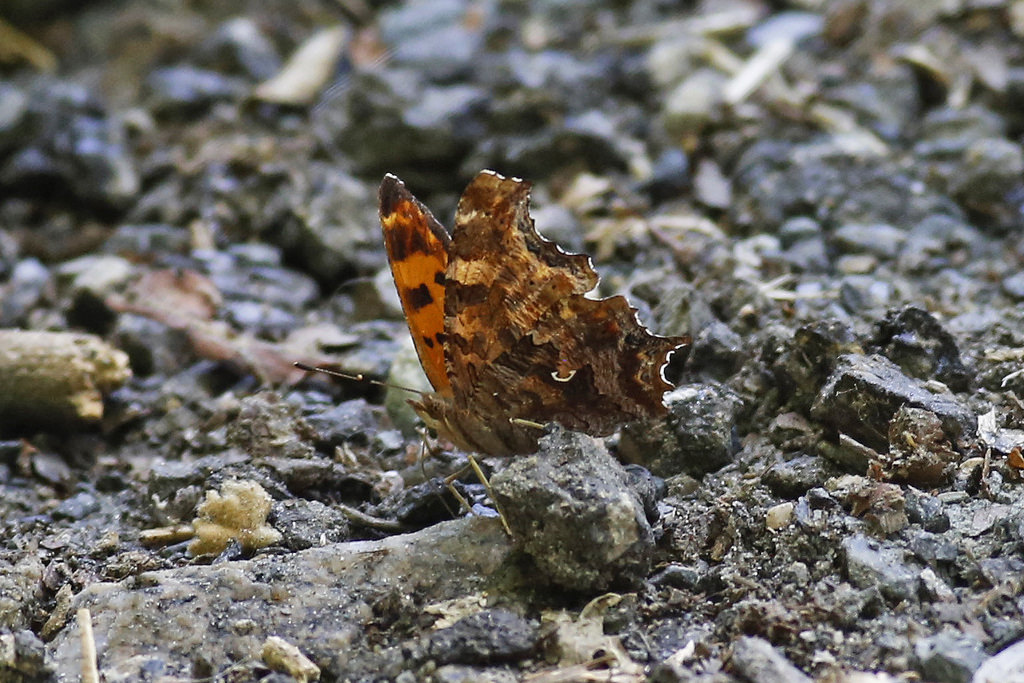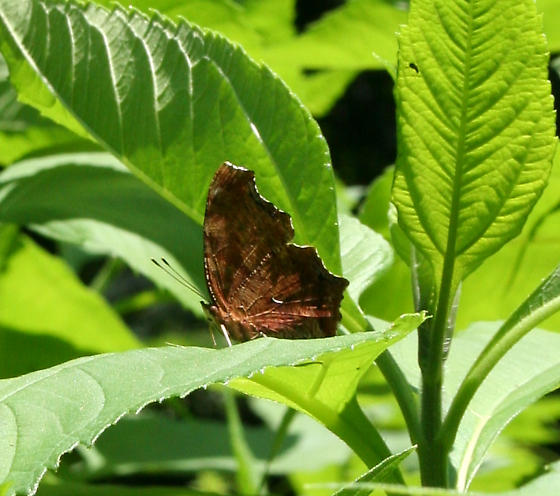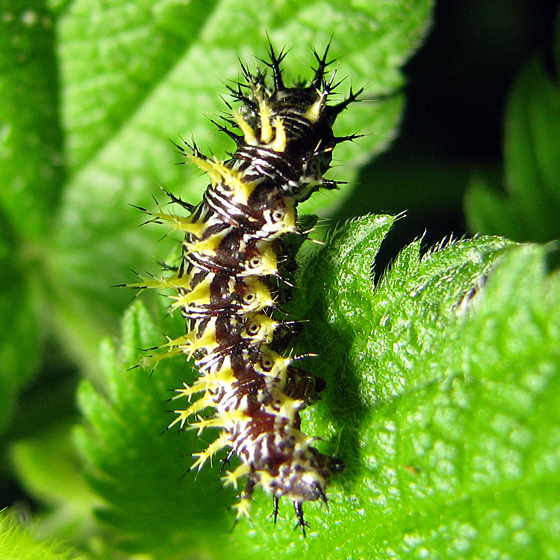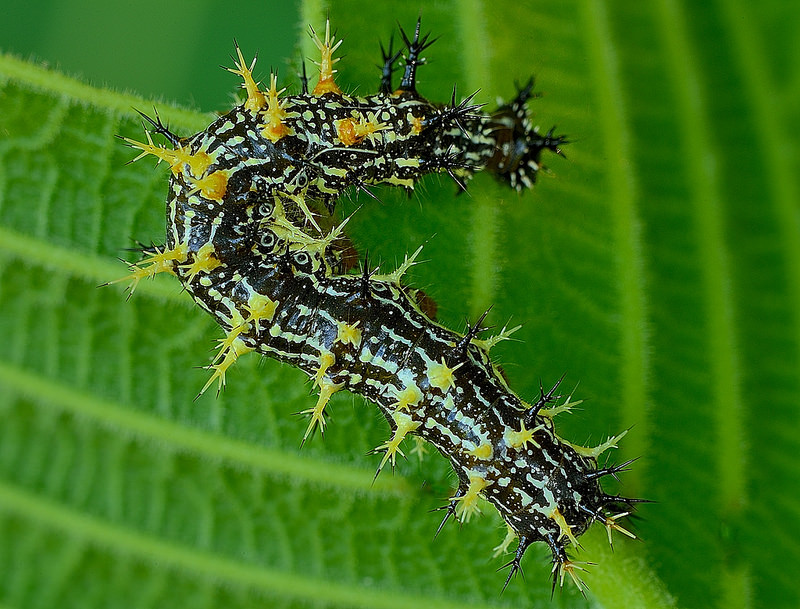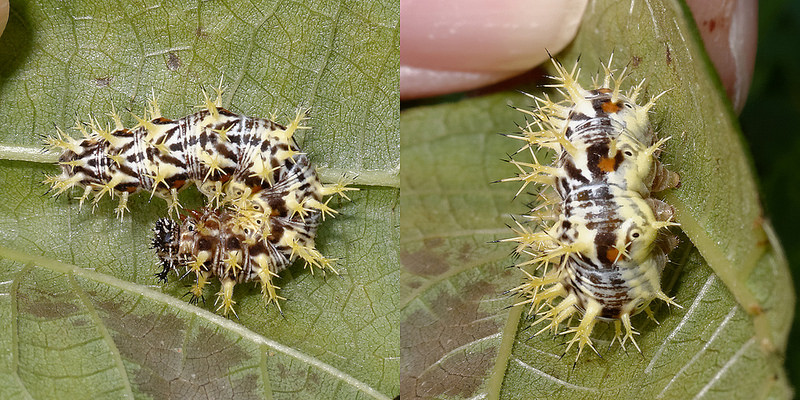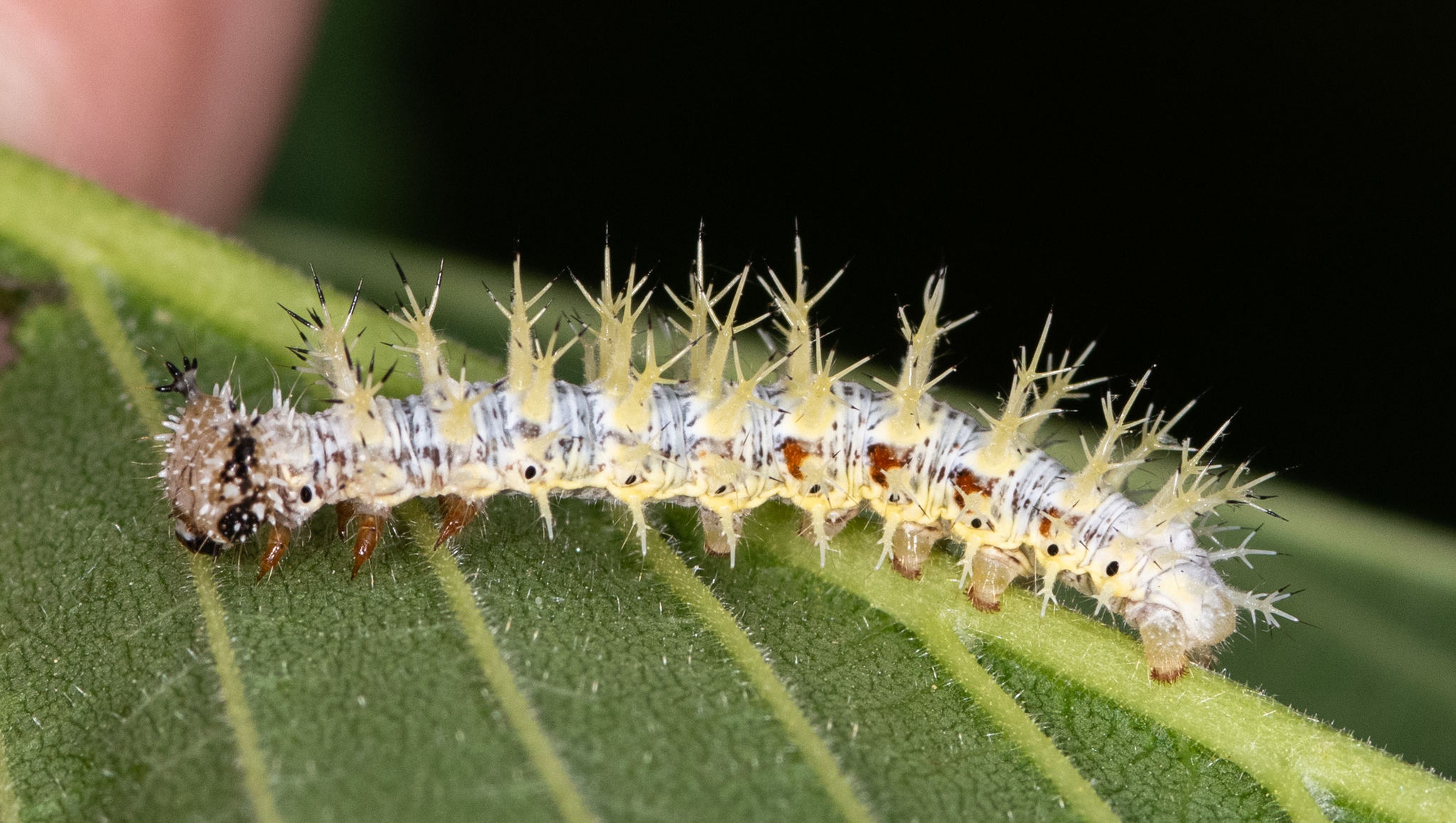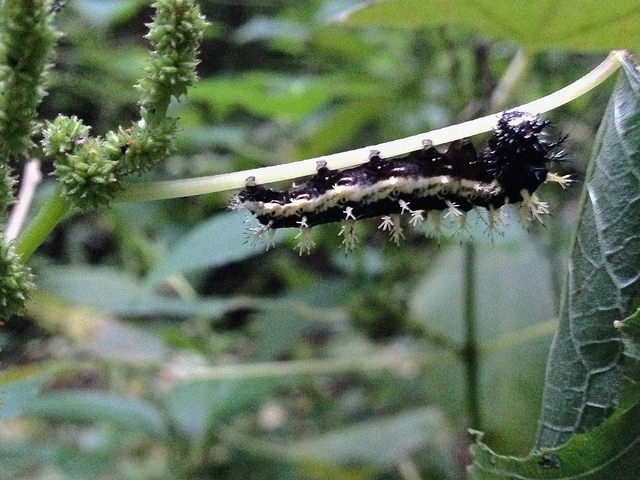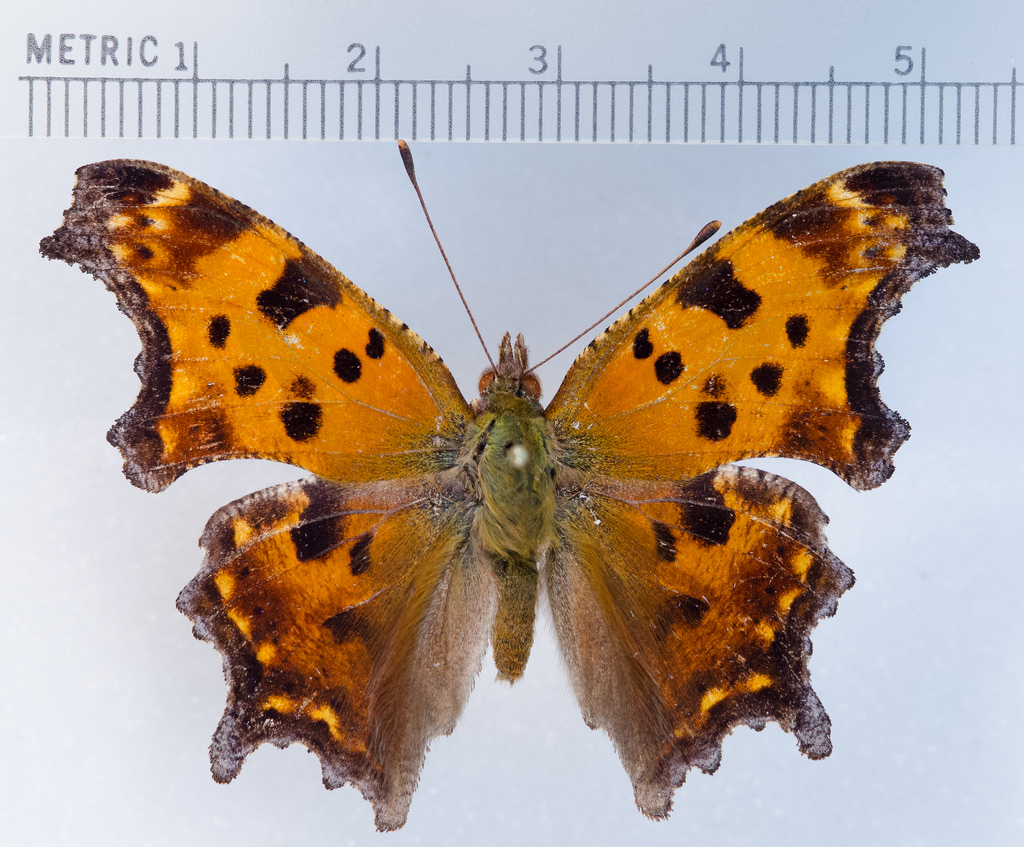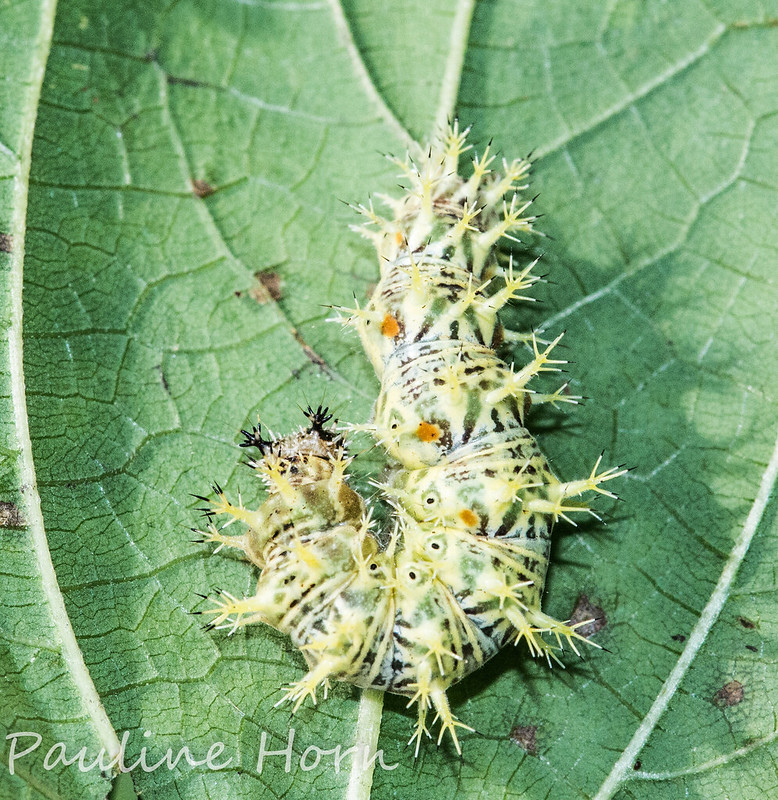Map Snapshot
























727 Records
Status
Eastern Comma (Polygonia comma) is a hardy and widespread butterfly, and often among the first species seen in spring. This butterfly hibernates as an adult, so they can resume activity almost as soon as temperatures start to climb. The orange upperside, with black spots, and the jagged wing margins are distinctive, and shared with just a few related species. This butterfly is particularly fond of rotting fruit, tree sap, and mud. It is usually found in woodland habitats and edges, where its host plants, and preferred food sources, are most common. This species has multiple broods, with summer individuals darker in coloration than overwintering ones
Description
Eastern Comma is most easily confused with relatives in the genus Polygonia. The larger Question Mark (Pologonia interrogationis) generally has more strongly-hooked forewings, a longer tail on the hindwing, and four subapical spots on the forewing, while commas have just three spots here. The very similar Gray Comma can be difficult to tell from Eastern, but can be discerned by noting certain combinations of characters. On the upperside, Gray Comma is very similar to Eastern, but usually has a darker hindwing (note that summer form Eastern can have similarly dark hindwings). On the underside, under close scrutiny, Gray Comma has a very distinctive, beautifully striated effect,and tends towards colder gray, often bicolored coloration, while Eastern is usually warmer shades of brown, and usually lacks strong striping. The silvery comma marking on Eastern is usually thick, and with strong hooks on both ends, while the marking is normally thin and shallow, with tapered ends on Gray.
Relationships
In West Virginia, uses nettles (Urtica spp.), Canadian Wood Nettle (Laportea canadensis), Small-spiked False Nettle (Boehmeria cylindrica), hops, elms (Ulmus spp.), and hackberries (Celtis spp.) as larval hosts (Allen 1997).
Seasonality Snapshot
Source: Wikipedia
| Eastern comma | |
|---|---|

| |
| Scientific classification | |
| Domain: | Eukaryota |
| Kingdom: | Animalia |
| Phylum: | Arthropoda |
| Class: | Insecta |
| Order: | Lepidoptera |
| Family: | Nymphalidae |
| Genus: | Polygonia |
| Species: | P. comma
|
| Binomial name | |
| Polygonia comma (Harris, 1842)
| |

| |
| Range map showing distribution of the eastern comma | |
| Synonyms | |
| |
Polygonia comma, the eastern comma, is a North American butterfly in the family Nymphalidae, subfamily Nymphalinae.
Description
[edit]
This butterfly is seasonally variable. The upperside of the summer form's hindwings are all black, whereas the winter forms hindwings are reddish orange. The underside of both forms is striped with dark and light brown. There is a silvery comma mark in the middle of the hindwing in both forms. Its wingspan is 4.5–6.4 cm (1.8–2.5 in).
Habitat
[edit]The eastern comma may be spotted in woods near rivers, ponds, marshes, swamps, and other water sources.
Nectar plants
[edit]This butterfly seldom visits flowers, but rather feeds on sap, rotting fruit, salts and minerals from puddling, and dung.
Host plants
[edit]Caterpillars feed on paper birch (Betula papyrifera), false nettle (Boehmeria cylindrica), hackberry (Celtis occidentalis), hops (Humulus), wood nettle (Laportea canadensis), currants and gooseberries (Ribes spp.), basswood (Tilia americana), American elm (Ulmus americana), nettle (Urtica),[2] and clearweed (Pilea pumila).[3]
Life cycle
[edit]The green eggs are laid singly or in stacks under host plant leaves and stems. The spiny larva varies in color from pale green to yellow to white and to even black. The solitary larva feeds on leaves at night. Older larvae construct daytime leaf shelters by pulling a single leaf together with silk. The chrysalis is brown and covered with spines. Winter-form adults overwinter;[4] some will also migrate south for the winter.
Similar species
[edit]The dark form of comma is frequently confused with the dark form of the question mark (P. interrogationis), but the two can readily be distinguished by the shape of the comma mark on the underside. The pale form is easily confused with the satyr comma (P. satyrus), which usually occurs north and west of the eastern comma's range. They can be distinguished by the upperside color, which is orange brown in the comma and tawny yellowish brown in P. satyrus; by the underside pattern, which tends to be mottled in the comma but appears to be more longitudinally streaked in P. satyrus; and by the row of pale submarginal spots on the hindwing upperside, which tend to be separate and surrounded by dark shading in comma, but are larger and tend to run together into a pale band in P. satyrus.
References
[edit]- Eastern Comma, Butterflies of Canada
- ^ "NatureServe Explorer 2.0 Polygonia comma Eastern Comma". explorer.natureserve.org. Retrieved 3 October 2020.
- ^ Robinson, Gaden S.; Ackery, Phillip R.; Kitching, Ian; Beccaloni, George W.; Hernández, Luis M. (2023). "HOSTS - The Hostplants and Caterpillars Database at the Natural History Museum". www.nhm.ac.uk. doi:10.5519/havt50xw.
- ^ "Clearweed". Hennepin County Master Gardeners. Regents of the University of Minnesota. 2022. Retrieved 4 August 2022.
- ^ Scott, J. A. (1999). Hibernal diapause of North American Papilionoidea and Hesperioidea. Archived 2018-10-08 at the Wayback Machine Journal of Research on the Lepidoptera 18(3):171-200.
External links
[edit]- Eastern comma on the UF / IFAS Featured Creatures Web site
